Santiago de Compostela Cathedral-Spain(Europe)
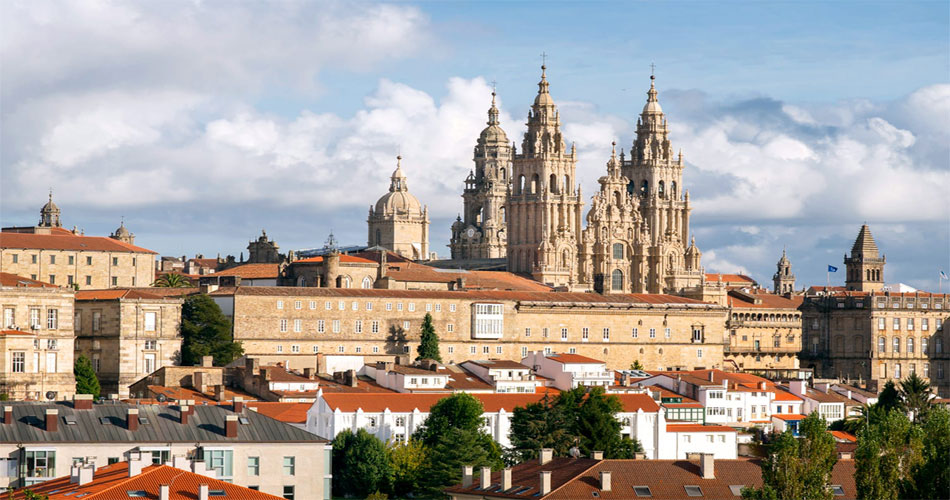
The Santiago de Compostela Arch cathedral Basilica is part of the Metropolitan Archdiocese of Santiago de Compostela and is an integral component of the Santiago de Compostela World Heritage Site in Galicia, Spain. The cathedral is the reputed burial place of Saint James the Great, one of the apostles of Jesus Christ.The archcathedral basilica has historically been a place of pilgrimage on the Way of St James since the Early Middle Ages and marks the traditional end of the pilgrimage route. The building is a Romanesque structure, with later Gothic and Baroque additions.This famous pilgrimage site in north-west Spain became a symbol in the Spanish Christians' struggle against Islam. Destroyed by the Muslims at the end of the 10th century, it was completely rebuilt in the following century.According to medieval legend, the remains of the apostle James, son of Zebedee were brought to Galicia for burial, where they were lost. Eight hundred years later the light of a bright star guided a shepherd, Pelagius the Hermit, who was watching his flock at night to the burial site in Santiago de Compostela.The Cathedral of Santiago de Compostela is an iconic symbol of the city of Santiago and the final point for many pilgrims walking or cycling the Camino de Santiago.Over the centuries, thousands of pilgrims from all over the world have made their way to the Cathedral of Santiago de Compostela in Galicia, North West of Spain. The pilgrims’ routes are the Camino de Santiago and the Way of St James.
La Sagrada Familia-Spain(Europe)
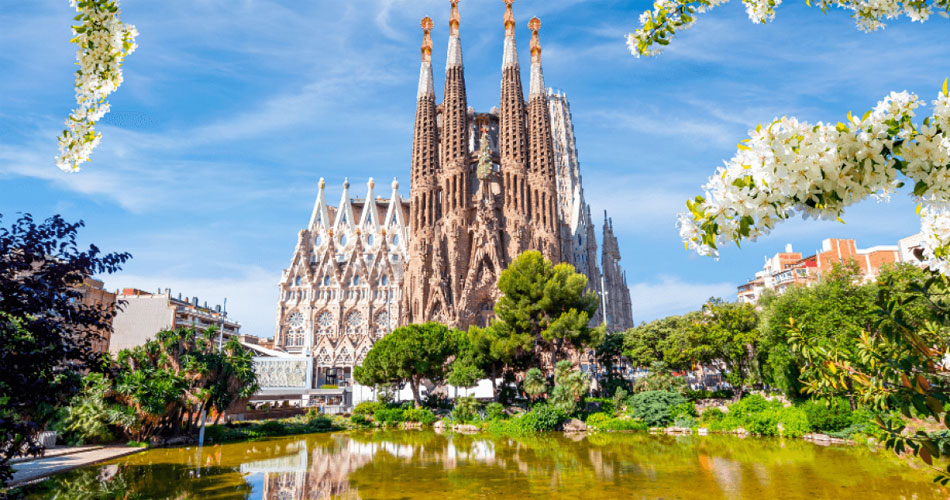
The Basílica i Temple Expiatori de la Sagrada Família, otherwise known as Sagrada Família, is a church under construction in the Eixample district of Barcelona, Catalonia, Spain. It is the largest unfinished Catholic church in the world.La Sagrada Familia is a building that Gaudí masterfully designed and, despite not being finished, UNESCO made it a World Heritage Site in 1984 because of its unique architecture and how Gaudí created something so artistic and innovative.The Sagrada Família is a truly exceptional temple, the result of the work of genius architect Antoni Gaudí. Today, more than 135 years after the laying of the cornerstone, construction continues on the Basilica.The Sagrada Família's chief architectural figure is Antoni Gaudi, who dedicated the remainder of his life to the construction of the church. The church was conceptualized by a bookseller named Josep María Bocabella. The Sagrada Família is 140 years old, having begun construction in 1882.Begun in 1882 and still unfinished in the first quarter of the 21st century, the Sagrada Família, notable for its tactile organic form, is one of Barcelona's most famous landmarks. It is an unexpected sight in its urban setting, with its bold flying buttresses and twisted towers looming over the city.
Catedral-Basílica de Santa María de Mallorca-Spain(Europe)
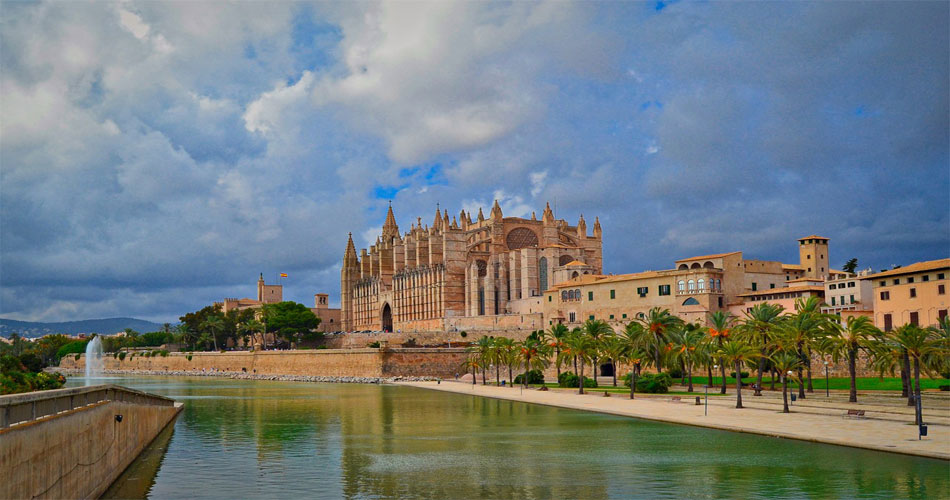
The Cathedral of Santa Maria of Palma, more commonly referred to as La Seu, is a Gothic Roman Catholic cathedral located in Palma, Mallorca, Spain.The Cathedral of Santa Maria of Palma is a Gothic Roman Catholic cathedral located in Palma, Majorca, Spain. It was built on the site of a pre-existing Arab mosque. It is 121 metres long and 55 metres wide. Its nave is 44 metres tall.It was built at exactly the place where the Arabian main mosque stood during the time of the Moors. After the liberation of Majorca from the Moors in 1230, King Jaume I laid the first stone of the church, but the cathedral was completed only 400 years later.Palma Cathedral has the largest rose window in the world out of all the cathedrals of this style. The “Eye of the Gothic”, as it has become known, measures 13 metres in diameter and has 1,236 sheets of glass that create a wonderful display of colors.The cathedral's Royal Chapel is located at the end of the presbytery, and is also a temple in itself. James II built it in 1306 to be buried there. The remains of James III also rest in the mausoleum. Both tombs were added in 1950 by the sculptor Frederic Marés.After surpassing the Hagia Sophia by size and volume, the Seville Cathedral became the world's largest gothic cathedral in existence. It is also listed as the third-largest church after St. Peter's Basilica of the Vatican and Brazil's Basilica of Our Lady Aparecida.
Canary Islands-Spain(Europe)
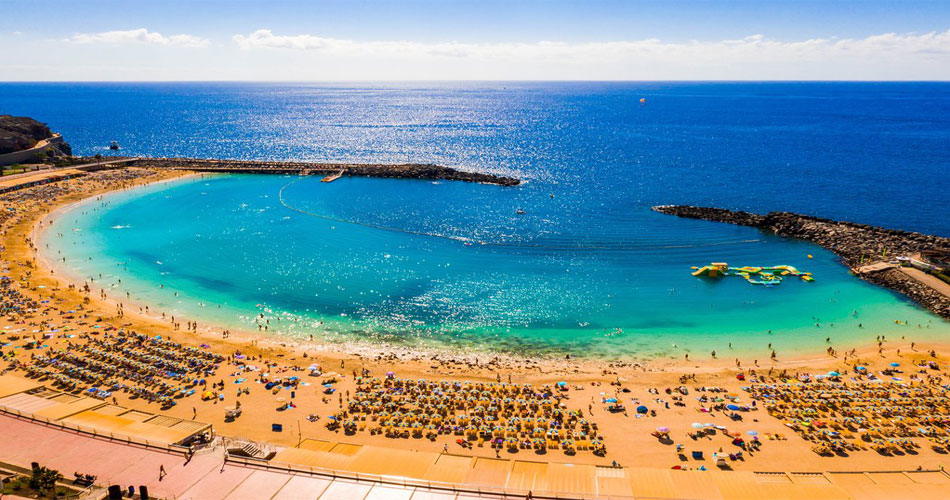
The Canary Islands are the southernmost region of Spain, and the largest and most populous archipelago of Macaronesia. Because of their location, the Canary Islands have historically been considered a link between the four continents of Africa, North America, South America, and Europe.The Canary Islands, a Spanish archipelago off the coast of northwestern Africa, are rugged volcanic isles known for their black- and white-sand beaches. Tenerife, the largest island, is dominated by the sometimes-snowy active volcano Mt. Teide, which has its own astronomical observatory and is part of Teide National Park. Tenerife hosts a huge pre-Lent Carnival in the capital, Santa Cruz de Tenerife.As well as good weather, volcanic scenery, and wonderful beaches, the Canary Islands offer some very interesting cultural sightseeing. For example, Tenerife has a World Heritage City, San Cristóbal de La Laguna. On the island of Lanzarote, the work of artist César Manrique blends with the natural environment.It wasn't from birds that the Canary Islands, known in Spanish as Islas Canarias, got their name, but dogs, or perhaps seals depending on what you believe. The name comes from the Latin word for dog, canaria, and was given by the first Europeans to arrive here.
Donostia-San Sebastian-Spain(Europe)
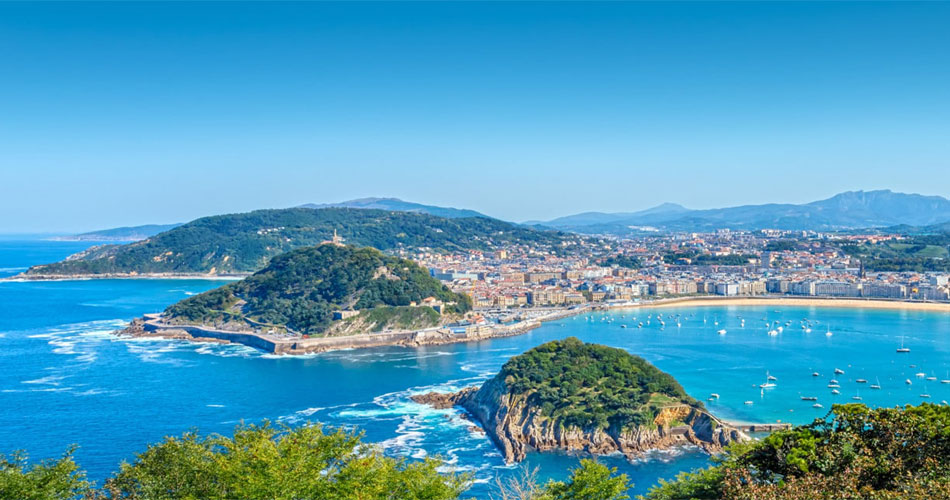
San Sebastián is a resort town on the Bay of Biscay in Spain’s mountainous Basque Country. It’s known for Playa de la Concha and Playa de Ondarreta, beaches framed by a picturesque bayfront promenade, and world-renowned restaurants helmed by innovative chefs. In its cobblestoned old town (Parte Vieja), upscale shops neighbor vibrant pintxo bars pairing local wines with bite-size regional specialties.A delightful beachfront promenade runs the length of the bay, with an charismatic old town at one end and a smart shopping district in the center. With a romantic setting, a soaring statue of Christ gazing over the city, and a late-night lively old town, San Sebastián has a mini Rio de Janeiro aura.San Sebastián, officially known by the bilingual name Donostia / San Sebastián (Basque: [doˈnos̺ti. a], Spanish: [san seβasˈtjan]), is a city and municipality located in the Basque Autonomous Community, Spain.San Sebastian's cost of living can be high, especially for renting and buying a home. Mobility can also present challenges, as at rush hour traffic increases and finding parking in the centre can be difficult. It is important to consider the weather when relocating to San Sebastian.
Go Back To Home